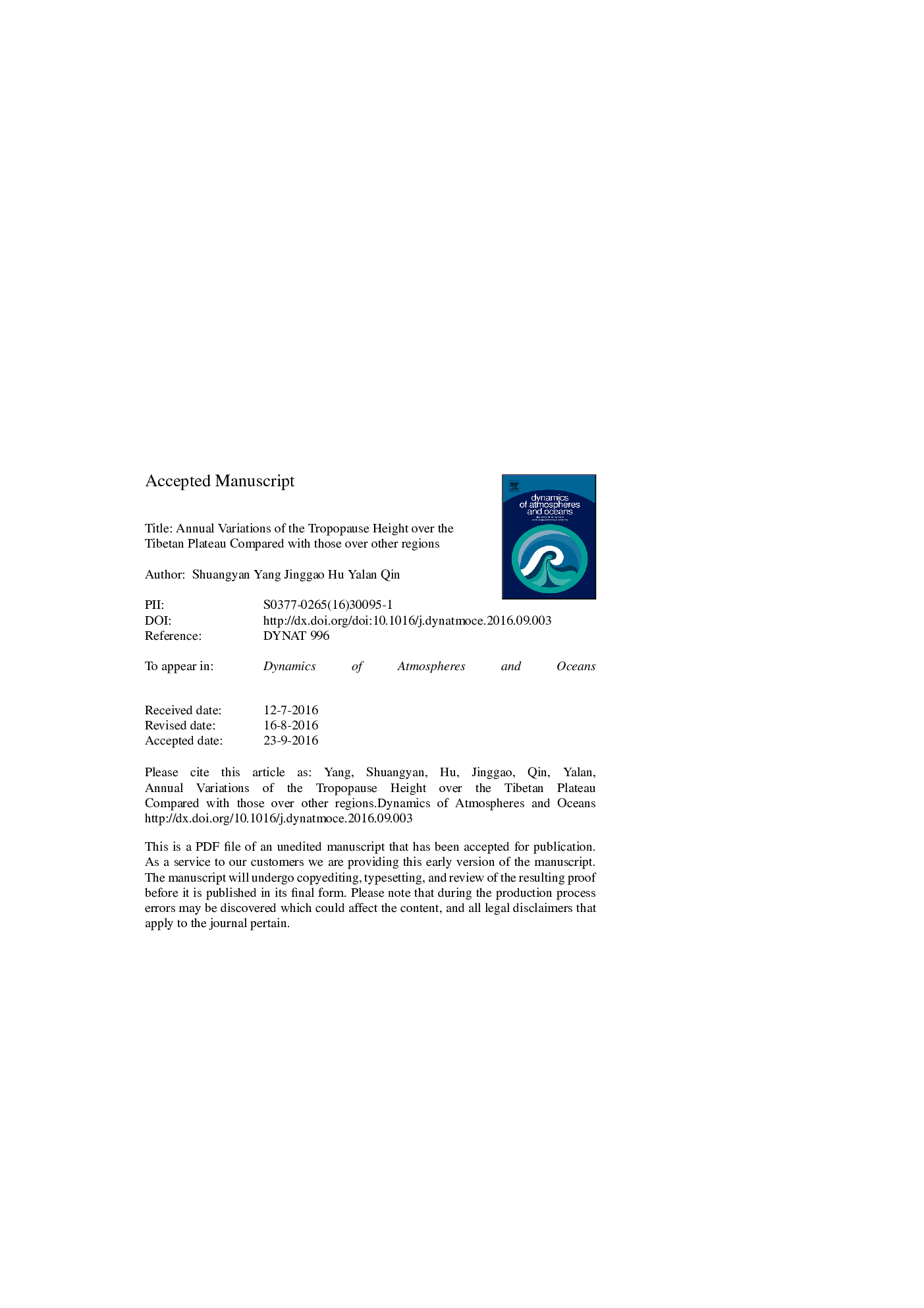| Article ID | Journal | Published Year | Pages | File Type |
|---|---|---|---|---|
| 5779164 | Dynamics of Atmospheres and Oceans | 2016 | 31 Pages |
Abstract
By using radiosonde data, the annual variation of the tropopause height over the Tibetan Plateau (TP) compared with that over the same latitude plain area and tropics is first analyzed, and then the tropopause heights over the TP obtained from radiosondes, ERA-40, NCEP-NCAR analysis, and the HALOE occultation measurement are compared. It is found that the second (first) tropopause is easier to be observed over the TP than that over the plain area in June-September (October-May). The first tropopause height (TH1) over the TP is higher than that over the plain area in boreal winter (November-March), while the second tropopause height (TH2) over the TP is higher in each month, and from April to September it is even higher than that over the tropics. The maximum differences of both TH1 and TH2 between the TP and tropics appear in boreal middle summer. The annual variation of TH2 over the TP exhibits a single-peak structure, while it shows a bimodal structure over the tropics. It is revealed that all the tropopause heights derived from ERA-40, NCEP-NCAR analysis, and HALOE measurement are between TH1 and TH2. During October-May, all of these heights are close to the average of TH1 and TH2. During June-September, all of them are close to TH2, and the HALOE-based height is most close to TH2 and their difference is less than 0.5Â km. Therefore, extreme caution should be exercised if ERA-40, NCEP-NCAR reanalysis, and the HALOE occultation measurement are selected to analyze the tropopause over the TP.
Keywords
Related Topics
Physical Sciences and Engineering
Earth and Planetary Sciences
Atmospheric Science
Authors
Shuangyan Yang, Jinggao Hu, Yalan Qin,
